 Politics
Politics  Politics
Politics  Weird Stuff
Weird Stuff Ten Bizarre Facts About The Doge Meme
 Our World
Our World 10 Ways Your Christmas Tree Is More Lit Than You Think
 Movies and TV
Movies and TV The 10 Coolest Stars to Set Sail on The Love Boat
 History
History 10 Things You Didn’t Know About the American National Anthem
 Technology
Technology Top 10 Everyday Tech Buzzwords That Hide a Darker Past
 Humans
Humans 10 Everyday Human Behaviors That Are Actually Survival Instincts
 Animals
Animals 10 Animals That Humiliated and Harmed Historical Leaders
 History
History 10 Most Influential Protests in Modern History
 Creepy
Creepy 10 More Representations of Death from Myth, Legend, and Folktale
 Politics
Politics 10 Political Scandals That Sent Crowds Into the Streets
 Weird Stuff
Weird Stuff Ten Bizarre Facts About The Doge Meme
 Our World
Our World 10 Ways Your Christmas Tree Is More Lit Than You Think
Who's Behind Listverse?

Jamie Frater
Head Editor
Jamie founded Listverse due to an insatiable desire to share fascinating, obscure, and bizarre facts. He has been a guest speaker on numerous national radio and television stations and is a five time published author.
More About Us Movies and TV
Movies and TV The 10 Coolest Stars to Set Sail on The Love Boat
 History
History 10 Things You Didn’t Know About the American National Anthem
 Technology
Technology Top 10 Everyday Tech Buzzwords That Hide a Darker Past
 Humans
Humans 10 Everyday Human Behaviors That Are Actually Survival Instincts
 Animals
Animals 10 Animals That Humiliated and Harmed Historical Leaders
 History
History 10 Most Influential Protests in Modern History
 Creepy
Creepy 10 More Representations of Death from Myth, Legend, and Folktale
10 Fascinating Trees With Mystical Histories
You’d have to be barking mad not to love trees. They’re humbling in both the time they live, and the sizes they reach. They provide oxygen, food, and building materials, so it’s no surprise that some of them have been featured extensively in mythology and folklore. Here are 10 fascinating examples of real trees from legend.
10 The Boyington Oak
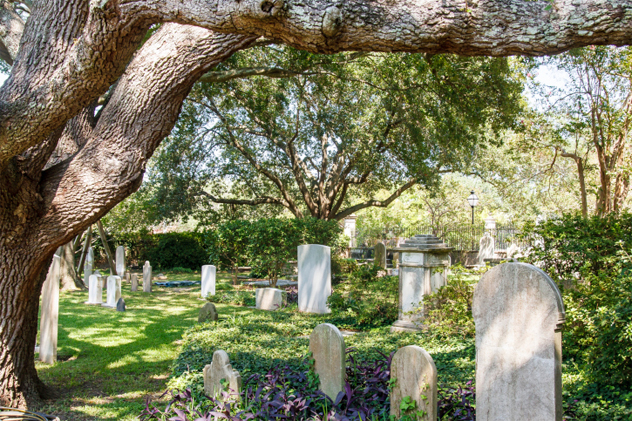
In 1835, a man named Charles Boyington was executed in Mobile, Alabama. He’d been convicted of the murder of his best friend, Nathaniel Frost, although Boyington insisted he was innocent. When he was brought to the gallows, he once again claimed that he had had nothing to do with stabbing Frost, and predicted that one day a great oak would grow from the site of his grave to prove his word.
He was buried just outside the city’s Church Street Cemetery—the same cemetery, in fact, where Frost’s body had been found. Within months, a small oak tree began growing above Boyington’s grave. As an executed criminal, he wasn’t deemed worthy of a plot inside the grounds. Today, people claim they can hear the cries of Boyington’s ghost, still trying to tell the world about his innocence.
9 The Crucifix Tree Of Malta

Jesus has a complicated relationship with sculptures of himself, and He’s been known to handle it in an Old Testament sort of way—with lightning bolts. There’s the giant Jesus statue in Ohio that was struck by lightning and burnt down, for example. The Messiah also used a bolt to blast a finger from the famous Christ statue above Rio. But it’s not that He’s opposed on principle; He just likes to decide for himself where the statues are going to go.
That, at least, is one explanation for the Jesus Tree of Malta. According to local folklore, the tree was struck by lightning. The force of the strike left the tree in the shape of Jesus hanging on the cross. Malta is the most religious country in the European Union. Catholicism is the official state religion; it’s followed by at least 94 percent of the population. It’s probably no surprise, then, that this natural crucifix has become so well loved.
Back in 2008, the tree was uprooted by strong winds. The mayor of the town of Rabat, where the tree is located, was inundated with phone calls. The local council, along with Malta’s Rural Affairs Ministry, put the tree back in place, adding structural supports to ensure it never happened again. It’s since been trimmed and placed in a base of concrete.
8 Stock Im Eisen
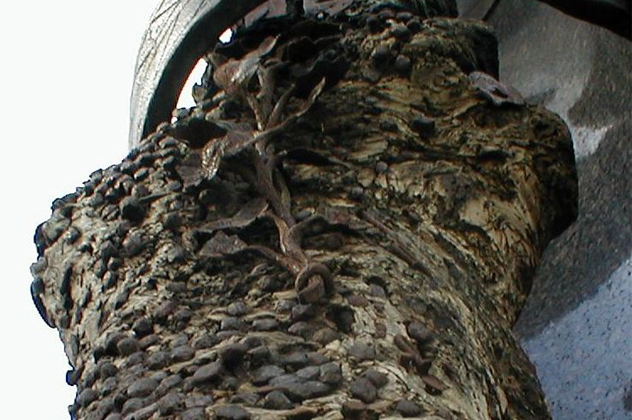
A nagelbaum, or nail tree, is a trunk into which blacksmiths hammer nails. Sometimes these are decorative, and the nails are made in interesting shapes, such as unicorns and snakes. The oldest and most famous of these is located in Vienna, and is known as the Stock im Eisen, which translates to Staff in Iron. The nails are all plain, but the history of the trunk certainly isn’t.
According to legend, a young locksmith made an unopenable lock with the help of Satan. The lad used this to fasten an iron band around a tree trunk. When the boy missed Mass one Sunday, the Devil took the young man’s soul, as had been their agreement. Every apprentice blacksmith in the area after that point hammered a nail into the trunk to avoid the same fate.
The tree was 1,400 years old by the time it died. It was removed from its original position in 1891, and today a short section sits on display in Vienna. It’s locked behind a glass display case on the corner of a 19th-century mansion, though there are no reports as to whether the case can be opened.
7 The Akshaya Vat

In the northern Indian city of Allahabad, there is a tree called the Akshaya Vat. It’s located in Patalpuri Temple, a collection of shrines that have stood since at least as far back as the seventh century. One sandstone pillar there is said to date from 232 B.C. A fort was built around the temple in 1583, and it’s still under the control of the Indian Army.
Narayana is the supreme God in Hinduism. Legends say that he was challenged to demonstrate his power by a sage, so Narayana briefly flooded the world. The Akshaya Vat was the only thing that stood above the water. Some Hindus worship the tree at Patalpuri as the one from legend.
If you want to see the fig tree for yourself, the shrine is open one day during the Hindu pilgrimage of Kumbh Mela. This event takes place every three years, and it alternates between four different locations. The last time it took place in Allahabad was 2013, so the next time the tree will be open to the public will be 2025. That’s plenty of time to make plans.
6 The Little Spirit Cedar Tree
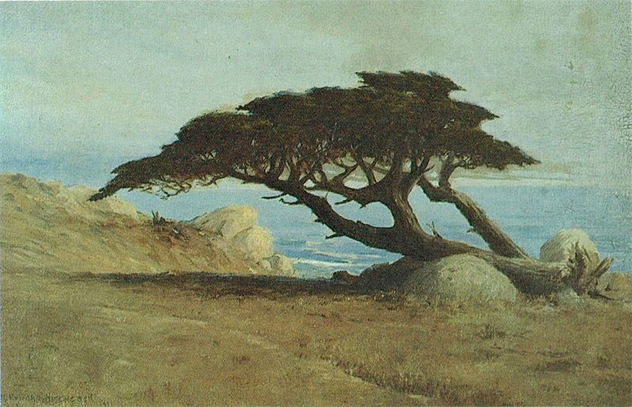
On the banks of Lake Superior is a gnarly old cedar that’s about 500 years old. It grows out of rock, all alone, and juts out over the lake. The trunk twists and curves in a way that makes the tree look anguished and sickly. It’s got an eerie charm that has captured the imaginations of many artists and photographers. The tree is often called The Witch Tree, which comes from the title of a 1920s painting that helped make it popular. The tree is recognized as an important historic place by the State of Minnesota. It became a landmark for European explorers in the 18th century due to its distinctive appearance.
The native Ojibwe people who lived in the area were already extremely familiar with the tree before the Europeans arrived. They believed that it harbored evil spirits, and that it would kill any canoeists who passed near it on the lake. The Ojibwe would leave gifts for the tree, such as tobacco, before setting off on journeys. While the Europeans may not have shared the same superstitions, they still knew a scary tree when they saw one, and many of them continued the gift-giving tradition.
Today, you can only visit the tree with a tour guide. Vandals have carved their initials into the trunk, and some have stolen chunks of bark. While it’s terrible that some people don’t care about such an important piece of history—not to mention such an unusual part of nature—we can’t help but think they’ve probably ended up with a really terrible curse for their trouble.
5 The Finnis Tree

In the early 20th century, a small bridge in the Irish village of Finnis was haunted by a very nasty ghost. Locals blamed the spirit for deaths and accidents on the bridge, and lived in fear of offending it. The local priest decided to perform an exorcism, and managed to trap the spirit in a bottle. He then decided to store it in a local sycamore beside the bridge.
As long as the tree stood, the ghost remained trapped, and whiskey remained the only spirit likely to cause a car accident in the area. Workers were even forced to reroute power lines around the tree when the priest insisted, with full local backing, that the tree couldn’t be removed. While it was later killed by a lightning strike, no one in the village would even consider removing the trunk, in case the spirits got out.
Despite all precautions, the remains of the sycamore were destroyed by a storm in 2009.The only way you can visit the tree today is to do it on Google Maps, because they photographed the area in 2008. The destruction of the tree was agreed by all to be a very bad thing. “I’m moving at the end of the month and now I’m glad I’m going,” said one of the luckier residents.
4 The Olive Trees Of Noah
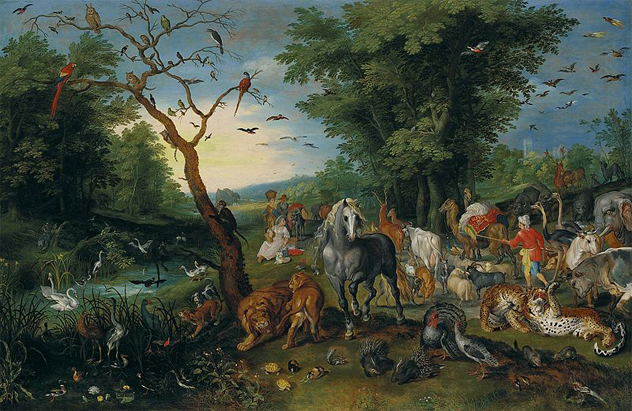
As Akshaya Vat showed us, great floods and legendary trees go together in world mythology like seahorses and adorable underwater carts. The flood of Noah will be a familiar myth to many readers, but if you’re rusty on Old Testament mythology, allow us to recap. Several thousand years ago, people were really badly behaved, so God decided to flood the entire planet and kill them all.
Noah and his family were the only good people left on Earth. Even though he was 600 years old, he built a really big boat—an ark, some would say. Two of every type of animal hopped on, and rain fell for 40 days and nights. At the end of the downpour, Noah sent a dove to find land. The bird came back with an olive leaf, telling Noah that there was land once again. While the story is plausible, there is one question that needs to be answered: Where exactly did that leaf come from?
Well, the world’s oldest olive trees are a good candidate. There are 16 trees in Lebanon known as The Sisters, or The Olive Trees Of Noah, and they’ve been growing for the last 6,000 years. They’re 1,300 meters (4,265 ft) above sea level, which would have made them almost certainly the highest olive trees alive at that time (and for a long while after).
Most impressive of all, the trees are still bearing fruit. An organization has started selling olive oil produced from The Sisters in order to raise funds for their upkeep. The organization also hopes to get a World Heritage Site designation for the olive grove. While we’re not nutritionists, it might be worth giving the olive oil a try. After all, Noah lived for another 350 years after the flood.
3 Tree Of Death

If you build a park on the burial ground of a leper hospital, and you end up with a haunted tree, you’ve only got yourself to blame. That’s the case for London’s imaginatively named Green Park, which is right next door to Buckingham Palace. The park is said to be home to a Tree Of Death—though nobody agrees exactly which tree it is.
Tales of the tree read like a greatest hits list for ghost story tropes. The trunk emits voices, groans, and laughter from an unnamed male specter. Birds shun the tree and refuse to sing in its branches. Homeless people and park keepers also stay away. A mysterious black figure sometimes appears around the tree. It emits a feeling of melancholy, and encourages people to commit suicide.
A more original tree in the same park is known as the Pig Tree. It’s said to cause women to experience a cruel hatred of men when they’re near it. The tree itself is protected by an otherworldly figure with a “repulsive” woman’s body and a face which is half pig and half wolf. Men who pass near the tree die of terror.
Another tree in the park is haunted by the ghost of a fiddler who once fell asleep against its trunk. When he awoke, he’d lost his fiddle, so he hanged himself in regret. He continues to wander the park, searching for the instrument. The tree itself is said to produce the soft sound of fiddle music.
2 Mill Ends Park

We’ve mentioned Mill Ends Park before, but this record holder for the world’s smallest park has seen drama since then, and it’s all focused around its (rather small) mystical tree.
The park in Portland, Oregon, was created on a small piece of dirt in the middle of a road that was originally intended to be home to a set of traffic lights. When the installation of the lights failed to go ahead, a local newspaper columnist named Dick Fagan began planting flowers there. It was there that he met Patrick O’Toole, a leprechaun. Fagan captured the little fellow, and according to tradition, a captured leprechaun must offer a wish.
Fagan wished for his own park, and the leprechaun granted him the small section of dirt in the road. Since that spot also happened to house a leprechaun colony, Fagan planted a small tree there to offer them shade. Later additions were made, including a miniature Ferris wheel delivered by a full-size crane.
At the beginning of March 2013, the tree was stolen from the park. The people of Portland, having pledged to take care of the city’s leprechauns, sprung into action—the tree was replaced. A spokesman from Portland Parks & Recreation department said, “We had to do what we could to ensure the leprechauns had shade.”
A week later, the original tree was returned and left lying beside its newly planted replacement. Yet despite the fact that the criminals had seen the error of their ways, the police weren’t willing to let the matter drop. “We will continue to pursue our investigation and hope that justice is served, and served swiftly,” said sergeant Pete Simpson.
1 Tane Mahuta
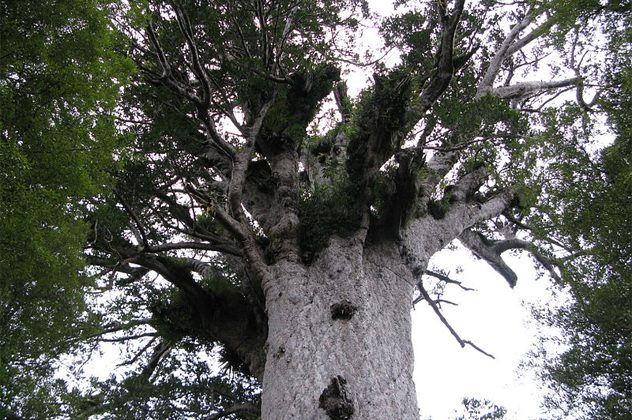
In the forests of New Zealand is a tree said to be a relic from the origin of the world itself. In the beginning of time, there were two great beings. One was the sky, Rangi, the father of all things. He lay with his love, Papa, the mother of all things. They had many children, who rested between them in darkness, not knowing about light. One day, however, the parents stirred and allowed a small beam of light to shine on the children. As soon as the youngsters found out about light, they wanted more.
One of their children was Tane Mahuta. He pushed down against his mother, and up against his father, until the parents were torn apart. Raindrops are actually tears of Rangi, saddened at being separated from his love. Tane Mahuta went on to become the god of the forest, and father of all living things there. Today, he is 51 meters (167 ft) tall.
As you would expect of any god, the tree today is a popular tourist destination. It has been partnered with a famous tree from Japan, the first ever twinning of historically important trees. Sometimes, though, even the gods need help. Water had to be pumped to the area back in 2013 to keep the tree alive following a drought. It took tens of thousands of liters over the course of two weeks to refresh the giant.
If you’d like to see Alan branching out, follow him on Twitter.







![10 Abandoned Amusement Parks With Horrific Histories [Disturbing] 10 Abandoned Amusement Parks With Horrific Histories [Disturbing]](https://listverse.com/wp-content/uploads/2019/09/gulliver-150x150.jpeg)
